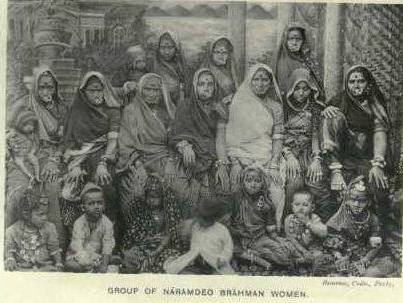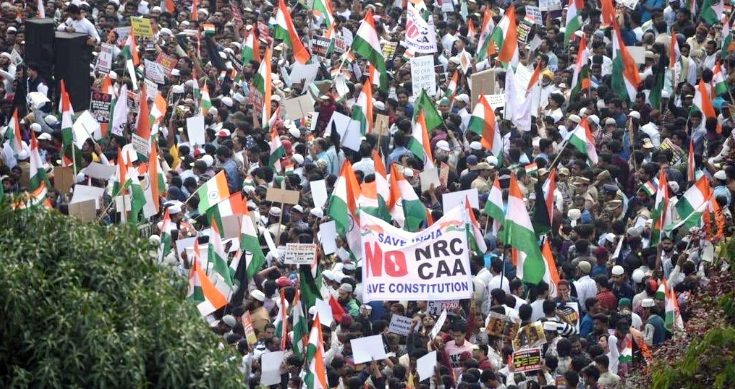by Thamburaj Dharmaraj
(Continued from The Touch of Ambedkar (Part I))

The shadow puppeteers’ mother tongue is not Tamil. Among themselves they speak a remote dialect of Marathi, which is their only communicative medium. To interact with others they use Tamil language. They claim their caste identity as ‘Mandikar’. The names of men of this community have the suffix ‘Rao’ while names of women have ‘Bai’.
They retell a popular migration tale regarding their arrival in Tamilnadu from the present day Maharashtra way back during the reign of King Saraboji of Tanjore. Their oral records recounts a tale about their migration with the regiments of the king. Such stories of affiliation with the state and power for their community give them immense pleasure. Moreover they strongly believed that their community’s existence was solely to sing and spread the story of Rama.
They proudly claim, “We earned our food through the chanting the word ‘rama’, ‘rama’”. Even now they propagate the belief that if the story of Rama is performed for ten continuous days then there will be rainfall. Earlier many villagers subscribed to these superstitions and supported the artists. However, the increasing public awareness that weather is highly relied upon the global environmental conditions rather than the narrative powers of Lord Rama disturbed them very much. Nevertheless, they are very proud about their professional link with lord Rama and their legendary connections with king Saraboji. Since they sing the story of Rama, they claimed, they don’t consume alcohol. They are very particular that the performer should lead a sacred way of life at least while enacting the ten days of Rama’s story. Though their performing area is crowded with leather puppets they are very careful in avoiding the puppets coming in any contact with their feet, as they considered this an act of derogation. The puppets are sacred to them. Hence the puppets are made up of goats’ skin but not the buffalo skin.
Our team explained the story of Ambedkar to the performers in great detail. Then our interaction entered the arena of visually representing the family background, childhood experiences, and the struggles of Ambedkar in pursuing higher studies, etc. At this time there developed an interesting area of conflicting narrative styles of the puppeteers and us. While writing the biography of Ambedkar, Dhananjay Keer narrates the incident of sanctifying the birth of Ambedkar. One of Ambedkar’s uncles was a self-proclaimed sanyasin. He had foretold the birth of ‘Ambedkar’ to his father. This reference made the puppeteers merry. As they are accustomed to the stories of celestial beings in the traditional form of shadow puppetry, to them, this incident signified that Ambedkar is also a saintly figure. Hence they felt that ‘Ambedkar Puppet Show’ could begin with this episode. They had their own logic for that. They opined that the puppet for the uncle character that prophesied the birth of Ambedkar was already available with them; the Viswamithra or the Vashista puppet of Ramayana show could be used as the uncle of Ambedkar.
We were stubborn and stern at this point. Deification of Ambedkar was not our agenda. We were very clear that we didn’t require more deities. The puppeteers’ idea was basically against our mission. We would like to portray Ambedkar as a wounded bird, which never gives up its fight against castiesm. Therefore, we wished to be far away from the puranic conception of Dhananjay Keer and puppeteers. We frankly conveyed this to them.
Then we designed the story line of Ambedkar puppet show in a linear and straightforward manner. The central conflict of every scene was improvised continuously. Then the puppets required for each and every scene was listed out. We asked the shadow puppet artists to write the dialogues and songs for all the scenes. At this point we encountered another peculiar problem, which was unfathomable for us; the puppeteers were not feeling free in writing the dialogues. The traditional oral performers experienced a ‘writers’ block’. Though we were there to help them in identifying the required puppets and in reminding the storyline, they felt blank. At this point we came across an important insight in the creative process of folk performance.
We had believed, like the production of a modern theatrical performance or the making of a feature film, shadow puppetry was also based on visual language. That was why we compelled them to conceive the entire story in the form of scenes. However, they felt a stumbling block even after providing all kinds of information. When we asked them, ‘what was the problem?’ they simply replied, ‘we didn’t know how to spell dialogues or songs unless and until we hold a puppet in our hand’. That was an eye opener for us, they continued, ‘we have to feel the puppet to think of their speech and songs’. Then we realized the mistake we made. One should not imagine the puppet show as a series of visuals. The puppeteer conceptualized the entire storyline in reference to the shadow puppets. They internalized the performance not as a sequence of episodes but as the animated trajectory of the puppets. What we had in our mind was the understanding of the audience who happened to watch only the animation of the coloured shadows of the puppet. Contrarily, the understanding of the performers who always sit in the backstage will definitely be different. Hence we immediately changed our method.
The internalization of the message of Ambedkar within the puppeteers happened in a very slow pace. They realized the basic information that Ambedkar was not a Tamilian but a Maharashtrian after a full day of discussion. Somehow they strongly felt that Ambedkar should be a Tamilian. Though there were a lot of references about the city ‘Mumbai’ in his life history they wrongly took it that the entire project was about a Tamilian who migrated to Mumbai. However, when we made it clear that he was a Maharastrian, they started to feel an intimacy. The shadow puppeteers were also Maharashtrians! But we avoided this coincidence. They started to enquire about his family background with much interest. ‘Why the names of Ambekar’s family was suffixed with ‘rao’?’ was their question. They discussed among themselves about the name of Ambedkar’s mother, ‘Beema Bai’ (we should remember that the puppeteers also have the custom of males’ name with the suffix ‘rao’ and females’ name with ‘bai’). Their curiosity then switched towards the caste identity of Ambedkar. When we told them, ‘Mahar’, they didn’t like to believe that. They reacted as if Ambedkar would have been a ‘Mandikar’ (the caste of puppeteer). In order to tease them, we told, ‘your caste is closely associated with the Kshathriya community, but Ambedkar was an untouchable, how is it possible that your caste and Ambedkar’s caste have been related to one another?’ They had nothing to say.
When they came to know about the entire life of Ambedkar, full of sorrow, pain, and struggle, their attitude changed dramatically. Once when we were in the middle of the discussion, Lakshmana Rao, the elder puppeteer, told us this: ‘I think, our Mandigar caste should have been an untouchable caste like Ambedkar’s. We, as a folk performer, experienced similar kind of humiliation. We also don’t have permanent houses to live; we are forced to be nomads; people compelled us to do shameful things; for a single piece of bread, we do it. I can tell you, there is no difference between the untouchables and us. The myth we believe that we are kshatriyas is meaningless’.
This is the message, message of the life of Ambedkar. I don’t want to reduce this as an isolated revelation taken place within a folk artist, Lakshmana Rao. The seed for the enlightenment is within the life story of Ambedkar. The persons who establish acquaintance with his life are initially struck by the raw nature of it. The painful experiences he had, the way he marched forward, and the methods he continuously improvised himself are all the significant pages of a dalit life. His life is stored with instances, which transform all to feel like an oppressed and fight against it. Lakshmana Rao, the old, traditional folk performer had acquired this consciousness from the story of Ambedkar.
Even before the completion of the project of Ambedkar’s story, we felt success.
Read part I here.










